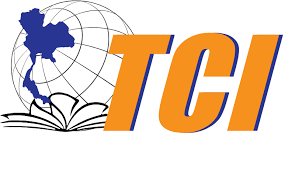Development of an Electric Tugger for Patient Bed Transportation
Keywords:
electric tugger, bed mover, patient bed, patient bed transportationAbstract
Transporting a patient in a bed within Songklanagarind Hospital, Faculty of Medicine, Prince of Songkla University, typically requires at least two workers. During peak hours, insufficient personnel often overburdens the patient transportation team. To address this challenge, this research aims to develop an electric tugger, or e-tugger, to facilitate patient bed transport. The e-tugger is designed to enable a single staff member to haul a patient bed on flat surfaces and up to a 5% incline to the destination. The e-tugger's design includes an electric tugger and a forklift. The tugger’s structure provides space to install the necessary components. A 3-kW brushless DC motor, powered by 72V, 15Ah Li-ion batteries, drives the system, allowing it to move a patient bed weighing up to 400 kg on a 5% incline. The staff can control the e-tugger's motion using either a control box or a joystick. The forklift, when viewed from the side, has an L-shape and is equipped with an integrated electric scissor jack that lifts the forklift up and down, operated via the control box. The e-tugger’s performance study focuses on two main aspects: (1) the user experience of coupling the e-tugger to the patient bed, and (2) the e-tugger’s operation on a 30-meter flat surface and in a passageway. Onsite testing demonstrates that one staff member can effectively transport a patient in a bed using the e-tugger. Coupling the e-tugger to a patient’s bed takes only 10 seconds. The e-tugger can propel a 255-kg patient bed at approximately 1.66 m/s. The electric motor consumes 2.46 A on a flat surface and 4.46 A on a 5% incline. Additionally, after transporting a 380-kg patient bed for 2.36 km, the battery's state of charge decreases by 2 %, with the e-tugger's average energy consumption rate being approximately 91.5 Wh/ 10 km.
References
Anonymous. 2024. The Controller APP For Android NEW 250 | far-driver. Far-driver. Available Source: https://www.far-driver.com/the-controller-app-for-android/, August 30, 2024.
Dadashi-Tonkaboni, N., Bagheri, M., Gholian-Aval, M., Ghaemi-Amiri, M., Pourhaji, F., Abdollahi, M. and Mahdizadeh, M.S. 2023.
Musculoskeletal Disorders due to Patient Transportation in Health Workers: A Systematic Review in Iran. International Journal of Musculoskeletal Pain Prevention 8(2): 864-873.
Daniell, N., Merrett, S. and Paul, G. 2014. Effectiveness of powered hospital bed movers for reducing physiological strain and back muscle activation. Applied Ergonomics 45(4): 849-856.
Dhelika, R., Hadi, A.F. and Yusuf, P.A. 2021. Development of a Motorized Hospital Bed with Swerve Drive Modules for Holonomic Mobility. Applied Sciences 11(23): 1-9.
Faria, N.M.S., Campilho, R.D.S.G., Silva, F.J.G. and Ferreira, L.P. 2021. Concept and Design of Automated Moving Device for Healthcare Equipment. FME Transactions 49(3): 598-607.
Fathollahi-Fard, A.M., Ahmadi, A., Goodarzian, F. and Cheikhrouhou, N. 2020. A bi-objective home healthcare routing and scheduling problem considering patients’ satisfaction in a fuzzy environment. Applied Soft Computing 93: 1-16.
Guo, Z., Xiao, X. and Yu, H. 2018. Design and Evaluation of a Motorized Robotic Bed Mover With Omnidirectional Mobility for Patient Transportation. IEEE Journal of Biomedical and Health Informatics 22(6): 1775-1785.
Hendrich, A.L. and Lee, N. 2005. Intra-unit patient transports: time, motion, and cost impact on hospital efficiency. Nursing Economic 23(4): 157-164.
Naesens, K. and Gelders, L. 2006. Reorganising Patient Transportation. Available Source: https://healthmanagement.org/c/hospital/IssueArticle/reorganising-patient-transportation, June 14, 2024.
Schäfer, F., Walther, M., Grimm, D.G. and Hübner, A. 2023. Combining machine learning and optimization for the operational patient-bed assignment problem. Health Care Management Science 26(4): 785-806.
Ueno, Y., Kitagawa, H., Kakihara, K., Sakakibara, T. and Terashima, K. 2014. Development of an Innovative Power-Assist Omni-Directional Mobile Bed Considering Operator’s Characteristics. International Journal of Automation Technology 8(3): 490-499.

Downloads
Published
How to Cite
Issue
Section
License
Copyright (c) 2024 Recent Science and Technology

This work is licensed under a Creative Commons Attribution-NonCommercial-NoDerivatives 4.0 International License.
The content and information in the article published in Journal of Rajamangala University of Technology Srivijaya It is the opinion and responsibility of the author of the article. The editorial journals do not need to agree. Or share any responsibility.






